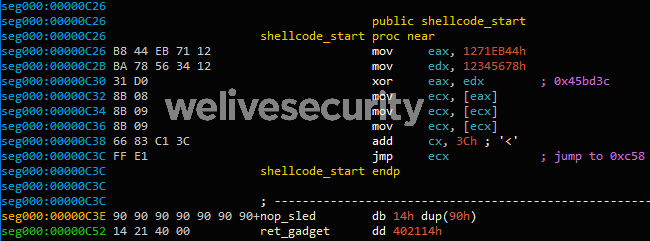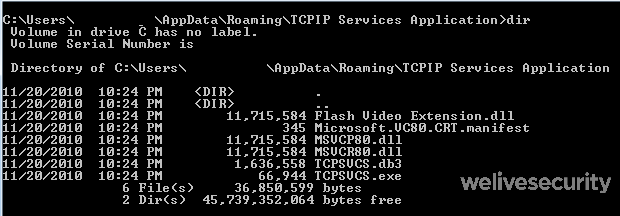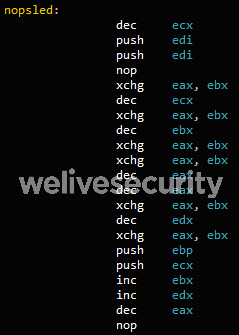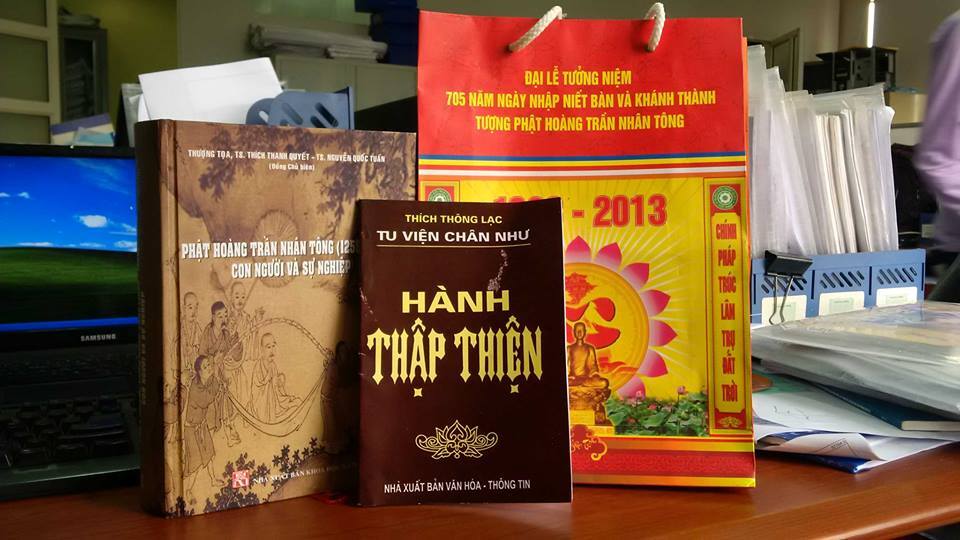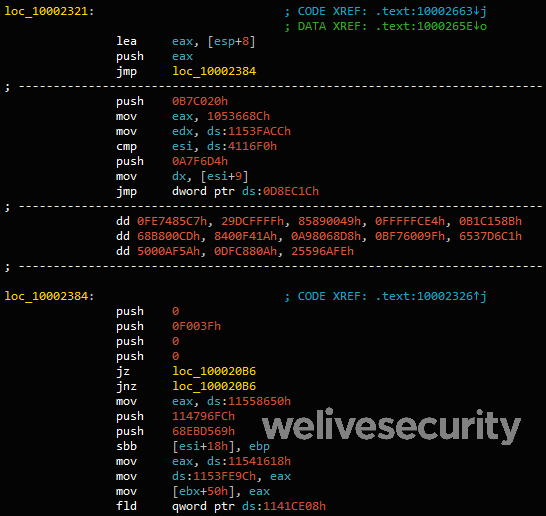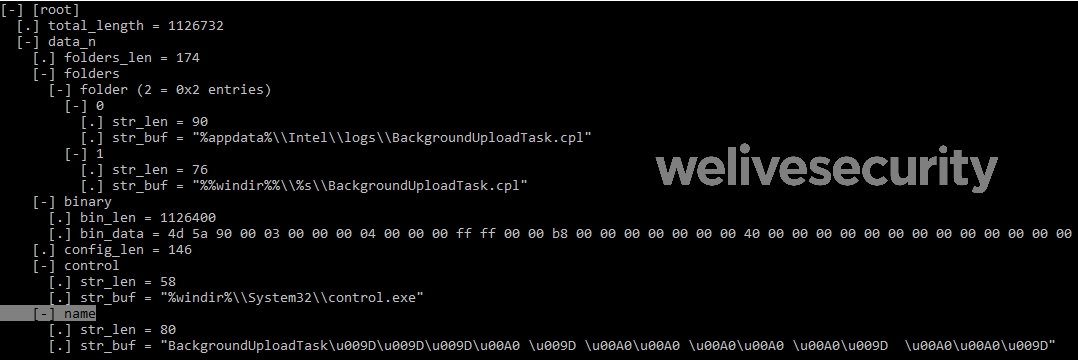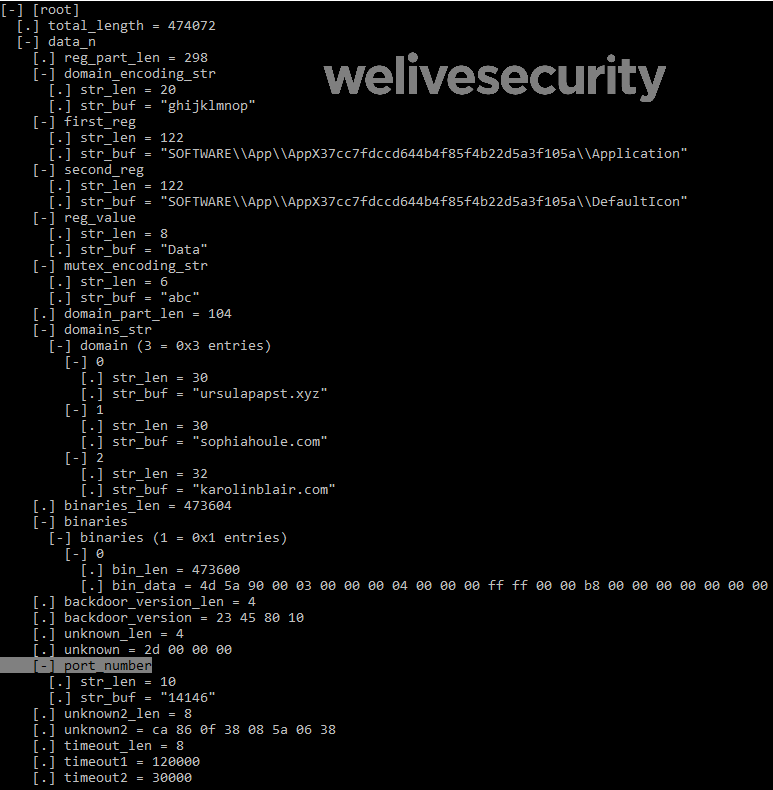This article will first describe how the OceanLotus group (also known as APT32 and APT-C-00) recently used one of the publicly available exploits for CVE-2017-11882, a memory corruption vulnerability present in Microsoft Office software, and how OceanLotus malware achieves persistence on compromised systems without leaving any traces. Then the article describes how, since the beginning of 2019, the group has been leveraging self-extracting archives to run code.
Context
Following OceanLotus’ activities is taking a tour in the world of deception. This group is known to lure victims by forging appealing documents to entice potential victims into executing the group’s backdoor, and keeps coming up with new ideas to diversify its toolset. The techniques employed for the decoys range from files with so-called double extensions, self-extracting archives and macro-enabled documents, to reusing known exploits. On top of that, they are very active and relentlessly continue to raid their favourite victims, South East Asian countries.
Summing up the Equation Editor exploit
In mid-2018, OceanLotus carried out a campaign using documents abusing the weakness exposed by the CVE-2017-11882 vulnerability. Indeed, several Proofs-of-Concept were made available. The vulnerability resides in the component responsible for rendering and editing mathematical equations. One of the malicious documents used by OceanLotus was analysed by 360 Threat Intelligence Center (in Chinese) and includes details about the exploit. Let’s take a look at a similar document.
First stage
This document FW Report on demonstration of former CNRP in Republic of Korea.doc (SHA-1: D1357B284C951470066AAA7A8228190B88A5C7C3) is similar to the one mentioned in the article above, and also interesting as it really targets people interested in Cambodian politics (the CNRP – Cambodia National Rescue Party – political party was dissolved in late 2017). Despite its .doc extension, the document is actually in RTF format (see Figure 1), contains many garbage groups, and is also malformed.
Despite the presence of malformed elements, Word successfully opens this RTF file. As seen in (Figure 2), at offset 0xC00 there is an EQNOLEFILEHDR structure, followed by the MTEF header and then an MTEF record (Figure 3) for a font.
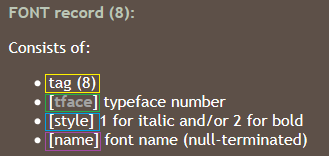
Figure 3 -- FONT record format
An overflow in the name field is possible because its size isn’t checked before being copied. A name that is too long triggers the vulnerability. As seen in the RTF file content (offset 0xC26 in Figure 2), the buffer is filled with shellcode followed by a NOP (0x90) sled and the return address 0x402114. That address is a gadget in EQNEDT32.exe pointing to a RET instruction. This results in EIP pointing at the beginning of the name field which contains the shellcode.
The address 0x45BD3C stores a variable that is dereferenced until it reaches a pointer to the currently loaded MTEFData structure. That is where the rest of the shellcode resides.
The purpose of the shellcode is to execute a second piece of shellcode, embedded inside the open document. First, the initial shellcode tries to find the handle of the open document file by iterating through all the system’s handles (NtQuerySystemInformation with the SystemExtendedHandleInformation argument) and checking if the handle’s PID matches the PID of a WinWord process and if the document was opened with the following access mask: 0x12019F. To confirm it found the right handle and not the handle of another open document, the content of the file is mapped with the CreateFileMapping function and the shellcode checks if the last four bytes of the document are "yyyy"; this technique is called “Egg Hunting”. Once it finds a match, the document is copied to a temporary folder (GetTempPath) as ole.dll. Then the last 12 bytes of the document are read.
The 32-bit value between the AABBCCDD and yyyy markers is the offset to the next shellcode. It is invoked using the CreateThread function. The extracted shellcode is the same that the OceanLotus group has been using for a while now. The Python emulator script we released in March 2018 still works to dump the next stage.
Second stage
Extracting the components
The filenames and directories are chosen dynamically. The code randomly selects the filename of an executable or DLL file located in C:\Windows\system32. It will then query its resources and extract the FileDescription field to use as a folder name. If this does not work, the code randomly chooses a folder name from the %ProgramFiles% or C:\Windows (from GetWindowsDirectoryW) directories. It avoids using a name that may clash with existing files by making sure it does not contain: windows, Microsoft, desktop, system, system32 or syswow64. If the directory already exists, the directory name is appended with "NLS_{6 digits}".
The stage’s 0x102 resource is parsed and the files are dropped in either %ProgramFiles% or %AppData% in the randomly chosen folder. The creation times are changed to have the same values as kernel32.dll.
For example, here is a folder and a list of files created by picking the C:\Windows\system32\TCPSVCS.exe executable as a source of data.
The structure of the resource 0x102 in the dropper is quite complex. In a nutshell, it contains:
- filenames
- files’ size and content
- compression format (COMPRESSION_FORMAT_LZNT1 used by RtlDecompressBuffer function)
The first file is dropped as TCPSVCS.exe which is in fact Adobe’s legitimate AcroTranscoder.exe (according to its FileDescription, SHA-1: 2896738693A8F36CC7AD83EF1FA46F82F32BE5A3).
You may have noticed that the file size of some DLLs exceeds 11MB. This is because a large contiguous buffer of random data is placed inside the executable. It is possibly a way to evade detection by some security products.
Achieving persistence
The resource 0x101 of the dropper contains two 32-bit integers that dictate how the persistence should be implemented. The value of the first one specifies how the malware will achieve persistence without administrator privileges.
| First integer value | Persistence mechanism |
|---|---|
| 0 | Do not achieve persistence |
| 1 | Scheduled task as current user |
| 2 | (HKLM|HKCU)\SOFTWARE\Microsoft\Windows\CurrentVersion\Run |
| 3 | Creation of a shortcut file (with a .lnk extension) in the subdirectory Microsoft\Windows\Start Menu\Programs\Startup under one of the environment variables: %ALLUSERSPROFILE%, %APPDATA% or %USERPROFILE% |
The value of the second integer specifies how the malware should try to achieve persistence if it runs with elevated privileges.
| Second integer value | Persistence mechanism |
|---|---|
| 1 | Scheduled task as administrator |
| 2 | Creation of a service |
The service name is the filename without extension; the display name is the folder name but if it already exists then the string “Revision 1” is appended (the number is incremented until it finds an unused name). The operators made sure the persistence through the service would be resilient: on service failure, the service should restart after 1 second. Then, the registry value WOW64 of the new service key is set to 4 which indicates that it’s a 32-bit service.
The scheduled task is created via several COM interfaces: ITaskScheduler, ITask, ITaskTrigger, IPersistFile and ITaskScheduler. Essentially, the malware creates a hidden task, sets the account information with the current user or the administrator information and sets the trigger.
This is a daily task with a duration of 24 hours and the interval between two executions is set to 10 minutes, which means it will run all the time.
The malicious bit
In our example, the executable TCPSVCS.exe (AcroTranscoder.exe) is legitimate software side-loading the DLLs that were dropped with it. In this case, the Flash Video Extension.dll is the interesting one.
Its DLLMain function just calls a single function. Some opaque predicates are present:
After these deceptive checks, the code gets the .text section of TCPSVCS.exe, changes its protection to PAGE_EXECUTE_READWRITE and overwrites it with do-nothing instructions that have no side effects:
At the end, a CALL instruction to the address of the function FLVCore::Uninitialize(void) exported by Flash Video Extension.dll is appended. This means that, after loading the malicious DLL, when the runtime calls WinMain in TCPSVCS.exe, the instruction pointer will point to the NOP sled, which will eventually call FLVCore::Uninitialize(void), the next stage.
This function simply creates a mutex starting with{181C8480-A975-411C-AB0A-630DB8B0A221}and followed by the current username. Then, it reads the dropped file with the .db3 extension, which contains position-independent code, and uses CreateThread to execute its content.
The content of the .db3 file is shellcode commonly used by OceanLotus. Again, we successfully unpacked its payload using the emulator script we published on GitHub.
The script extracts the final stage. This component is the backdoor that we already analysed in this white paper: OceanLotus: Old techniques, new backdoor. It is recognizable as such from the GUID {A96B020F-0000-466F-A96D-A91BBF8EAC96} that is present in the binary. The configuration of the malware is still encrypted in a PE resource. It contains almost the same configuration but the C&C servers are different from the ones that were already published:
- andreagahuvrauvin[.]com
- byronorenstein[.]com
- stienollmache[.]xyz
Once again OceanLotus showcases a large combination of techniques to stay under the radar. They came back with a “better” version of the infection process. By choosing random names and filling executables with random data, they reduce the number of reliable IoCs (hash-based and filename-based). Moreover, since they’re using DLL side-loading, the attackers only have to drop the legitimate AcroTranscoder binary as-is.
Self-Extracting archives
After using RTF files, the group started using self-extracting (SFX) archives that use common document icons in an attempt to further mislead their victims. It was briefly documented by Threatbook (in Chinese). When run, these self-extracting RAR files drop and execute DLL files (with a .ocx extension) with the final payload being the previously documented {A96B020F-0000-466F-A96D-A91BBF8EAC96}.dll. Since the middle of January 2019, OceanLotus began reusing the technique but changed some configuration over time. This section will describe the technique and what they have altered to achieve their goal.
Falling for the decoy
The document THICH-THONG-LAC-HANH-THAP-THIEN-VIET-NAM (1).EXE (meaning "FAVORITE RELATIONSHIP OF VIETNAMESE PERFORMANCE" according to Google Translate, SHA-1: AC10F5B1D5ECAB22B7B418D6E98FA18E32BBDEAB) was first seen in 2018. This SFX file is cleverly crafted, as the description (Version Info) states it’s a “JPEG Image”. The script of the SFX is the following:
The malware drops {9ec60ada-a200-4159-b310-8071892ed0c3}.ocx (SHA-1: EFAC23B0E6395B1178BCF7086F72344B24C04DCC) as well as the image 2018 thich thong lac.jpg.
The decoy image is the following:
You may have noticed the first two lines in the SFX script invoke the OCX file twice, but it is not a mistake...
{9ec60ada-a200-4159-b310-8071892ed0c3}.ocx (ShLd.dll)
The OCX file’s control flow is very similar to other OceanLotus components: there are a lot of JZ/JNZ and PUSH/RET instruction sequences interleaved with junk code.
After filtering the junk code, the export DllRegisterServer called by regsvr32.exe looks like this:
Basically, the first time the DllRegisterServer is called, it sets the registry value HKCU\SOFTWARE\Classes\CLSID\{E08A0F4B-1F65-4D4D-9A09-BD4625B9C5A1}\Model to an encoded offset in the DLL (0x10001DE0).
The second time the function is called, it reads this very same value and executes the function at that address. From there, the resource is read and executed and many in-memory operations are executed.
The shellcode is the same PE loader used in the earlier OceanLotus campaigns. It can be emulated with our miasm emulation script. Ultimately, it drops db293b825dcc419ba7dc2c49fa2757ee.dll, loads it into memory and executes DllEntry.
The DLL retrieves the content of its resource, decrypts (AES-256-CBC) and decompresses it (LZMA). The resource has a specific format that is quite easy to reverse engineer.
The configuration is explicit: depending on the privilege level, the binary data will be written to either %appdata%\Intel\logs\BackgroundUploadTask.cpl or %windir%\System32\BackgroundUploadTask.cpl (or SysWOW64 for 64-bit systems).
Next, persistence is achieved by creating a task named BackgroundUploadTask[junk].job where a [junk]is a collection of 0x9D and 0xA0 bytes.
The application name of the task is %windir%\System32\control.exe and the parameter value is the path of the dumped binary. The hidden task is set to run every day.
Structurally, the CPL file is a DLL whose internal name is ac8e06de0a6c4483af9837d96504127e.dll and that exports a CPlApplet function. This file decrypts its only resource {A96B020F-0000-466F-A96D-A91BBF8EAC96}.dll, then loads that DLL and calls its only export, DllEntry.
Backdoor configuration file
The backdoor has an encrypted configuration embedded in its resources. The structure of the configuration file is quite similar to the previous one.
Despite the structural similarity, of the values in many of these fields have been updated comparing this to that in our white paper from March 2018.
The first element of the binaries array contains a DLL (HttpProv.dll MD5: 2559738D1BD4A999126F900C7357B759) identified by Tencent but as the export name has been removed from the binary, the hashes don't match.
Going the extra mile
While hunting for samples, a few characteristics stood out. The sample just analysed appeared around July 2018 and other similar were found very recently in mid-January through early-February 2019. The infection vector used was an SFX archive dumping a legitimate, decoy document and a malicious OCX file.
Even though OceanLotus uses fake timestamps, it has been observed that the timestamp of the SFX and OCX files are always the same (0x57B0C36A (08/14/2016 @ 7:15pm UTC) and 0x498BE80F (02/06/2009 @ 7:34am UTC) respectively). This probably means that they have some kind of “builder” that reuses the same templates and just changes some characteristics.
Among the documents we analysed since early-2018, we saw different document names suggesting country-related targeting:
- The New Contact Information Of Cambodia Media(New).xls.exe
- 李建香 (个人简历).exe (fake pdf document of a CV)
- feedback, Rally in USA from July 28-29, 2018.exe
Since the discovery of the {A96B020F-0000-466F-A96D-A91BBF8EAC96}.dll backdoor and its public analysis by multiple researchers, we observed some changes in the malware’s configuration data.
First, the authors started removing the names from the helper DLLs (DNSprov.dll and the two versions of HttpProv.dll).
Then the operators stopped packaging the third DLL (second version of HttpProv.dll), choosing to embed just one.
Second, a lot of the backdoor configuration fields have been changed, perhaps to avoid detection, since many IoCs became available.
The important fields that changed are the following:
- the "AppX" registry key changed (see IoCs)
- the mutex encoding string ("def", "abc", "ghi")
- the port number
Finally, all the new variants analysed have new C&C servers, which are listed in the IoCs section.
Conclusion
OceanLotus is very active and keeps evolving. The group really focuses on varying their toolsets and decoys. They cleverly wrap their payloads with attractive documents based on current events that are likely to be of interest to their intended victims. They keep coming up with different techniques and even reuse and readapt publicly available exploit code such as for the Equation Editor exploit. Moreover, they keep improving their techniques to reduce the number of artefacts left on their victims’ machines, thereby reducing the odds of detection by security products. As we have shown, a lot of in-memory operations are involved, filenames are randomly generated and the OceanLotus operators have modified their binaries to avoid being detected. Another very interesting point is that some domain names seem to be derived from a dictionary. OceanLotus is making the extra effort to continue carrying out their campaigns, but don’t hold your breath…
Indicators of Compromise (IoCs)
The IoCs in this blogpost, as well as the MITRE ATT&CK attributes, are also available from our GitHub repository.
Registry keys/values:
- HKCU\SOFTWARE\Classes\CLSID\{E08A0F4B-1F65-4D4D-9A09-BD4625B9C5A1}\Model
- [HKCU|HKLM]\SOFTWARE\App\
- AppXbf13d4ea2945444d8b13e2121cb6b663\
- Application
- DefaultIcon
- AppX70162486c7554f7f80f481985d67586d\
- Application
- DefaultIcon
- AppX37cc7fdccd644b4f85f4b22d5a3f105a\
- Application
- DefaultIcon
- AppXbf13d4ea2945444d8b13e2121cb6b663\
Mutexes:
- {181C8480-A975-411C-AB0A-630DB8B0A221}_ (+ username)
| Domain names |
|---|
| aliexpresscn[.]net |
| andreagahuvrauvin[.]com |
| andreagbridge[.]com |
| aol.straliaenollma[.]xyz |
| beaudrysang[.]xyz |
| becreybour[.]com |
| byronorenstein[.]com |
| chinaport[.]org |
| christienoll[.]xyz |
| christienollmache[.]xyz |
| cloud.360cn[.]info |
| dieordaunt[.]com |
| dns.chinanews[.]network |
| illagedrivestralia[.]xyz |
| karelbecker[.]com |
| karolinblair[.]com |
| lauradesnoyers[.]com |
| ntop.dieordaunt[.]com |
| office.ourkekwiciver[.]com |
| ourkekwiciver[.]com |
| sophiahoule[.]com |
| stienollmache[.]xyz |
| straliaenollma[.]xyz |
| ursulapapst[.]xyz |
Files:
| Documents exploiting CVE-2017-11882: |
|---|
| SHA-1 hashes |
| D1357B284C951470066AAA7A8228190B88A5C7C3 |
| 49DFF13500116B6C085C5CE3DE3C233C28669678 |
| 9DF3F0D8525EDF2B88C4A150134C7699A85A1508 |
| 50A755B30E8F3646F9476080F2C3AE1347F8F556 |
| BB060E5E7F7E946613A3497D58FBF026AE7C369A |
| E2D949CF06842B5F7AE6B2DFFAA49771A93A00D9 |
| ESET detection names |
| Win32/Exploit.CVE-2017-11882.BU |
| Win32/Exploit.CVE-2017-11882.A |
| Win32/Exploit.Agent.KT |
| Win32/Exploit.Agent.LT |
| Win32/Exploit.CVE-2017-11882.EI |
| SFX archives and OCX droppers: |
| SHA-1 hashes |
| AC10F5B1D5ECAB22B7B418D6E98FA18E32BBDEAB |
| 7642F2181CB189965C596964D2EDF8FE50DA742B |
| CD13210A142DA4BC02DA47455EB2CFE13F35804A |
| 377FDC842D4A721A103C32CE8CB4DAF50B49F303 |
| B4E6DDCD78884F64825FDF4710B35CDBEAABE8E2 |
| BD39591A02B4E403A25AAE502648264308085DED |
| B998F1B92ED6246DED13B79D069AA91C35637DEC |
| CC918F0DA51794F0174437D336E6F3EDFDD3CBE4 |
| 83D520E8C3FDAEFB5C8B180187B45C65590DB21A |
| EFAC23B0E6395B1178BCF7086F72344B24C04DCC |
| 8B991D4F2C108FD572C9C2059685FC574591E0BE |
| B744878E150A2C254C867BAD610778852C66D50A |
| 3DFC3D81572E16CEAAE3D07922255EB88068B91D |
| 77C42F66DADF5B579F6BCD0771030ADC7AEFA97C |
| ESET detection names |
| Win32/Agent.ZUR |
MITRE ATT&CK techniques
| Tactic | ID | Name | Description |
|---|---|---|---|
| Initial Access | T1193 | Spearphishing Attachment | Deceitful RTF documents and self-extracting archives are sent to potential victims. |
| Execution | T1204 | User Execution | The user needs to execute the self-extracting archive or open the RTF document. |
| T1117 | Regsvr32 | The self-extracting archives execute regsvr32 to run the OceanLotus' backdoor. |
|
| T1035 | Service Execution | The second stage of the exploit tries to run OceanLotus' backdoor as a service. | |
| Persistence | T1050 | New Service | The second stage of the exploit tries to achieve persistence by creating a service. |
| T1060 | Registry Run Keys / Start Folder | The second stage of the exploit tries to achieve persistence by adding a value in the Run registry key. | |
| T1053 | Scheduled Task | The second stage of the exploit tries to achieve persistence by creating a schedule task. | |
| Defense Evasion | T1009 | Binary Padding | The second stage of the exploit fills dropped executables with random data. |
| T1073 | DLL Side-Loading | OceanLotus' backdoor is side-loaded by dropping a library and a legitimate, signed executable (AcroTranscoder). | |
| T1112 | Modify Registry | OceanLotus' backdoor stores its configuration in a registry key. | |
| T1027 | Obfuscated Files or Information | The second stage of the exploit drops an encrypted shellcode. | |
| T1099 | Timestomp | The creation time of the files dropped by the second stage of the exploit is set to match the creation time of kernel32.dll. |
|
| Discovery | T1083 | File and Directory Discovery | OceanLotus' backdoor can list files and directories. |
| T1012 | Query Registry | OceanLotus' backdoor can query the Windows Registry to gather system information. | |
| T1082 | System Information Discovery | OceanLotus' backdoor captures system information and sends it to its C&C server. | |
| Exfiltration | T1002 | Data Compressed | OceanLotus' backdoor uses LZMA compression before exfiltration. |
| T1022 | Data Encrypted | OceanLotus' backdoor uses RC4 encryption before exfiltration. | |
| T1041 | Exfiltration Over Command and Control Channel | Data exfiltration is done using the already opened channel with the C&C server | |
| T1203 | Exploitation for Client Execution | The RTF document includes an exploit to execute malicious code. (CVE‑2017‑11882) | |
| Command And Control | T1094 | Custom Command and Control Protocol | OceanLotus' backdoor can exfiltrate data by encoding it in the subdomain field of DNS packets. |
| T1065 | Uncommonly Used Port | OceanLotus' backdoor use HTTP over an uncommon TCP port (14146). Port is specified in the backdoor configuration. |




